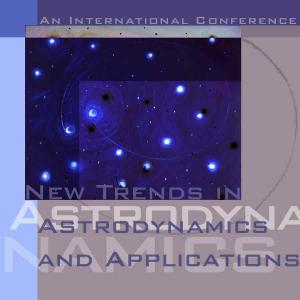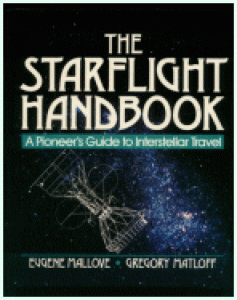Ed Belbruno did a terrific job putting together the New Trends in Astrodynamics and Applications II conference, from which I returned yesterday. I chose to drive to Princeton because of my growing aversion to airline travel. It was a long but generally uneventful drive except for the usual delays around Washington DC — over an hour to clear the Beltway because of construction on one of the access ramps. But driving through western New Jersey is, as anyone who has done it knows, a pleasant experience, beautiful farmlands giving way to small villages here and there, with Princeton itself an oasis of lovely architecture, fine restaurants and, of course, a great university.
 About the only thing that didn’t cooperate was the weather — we had a chill rain for the first two days — but Peyton Hall is about half a mile from the Nassau Inn, Princeton’s fine colonial-era hostelry, and it was an energizing walk even with umbrella. The conference sessions were intense; we generally ran from 8:30 or so to 6, with a social gathering the first evening, a banquet the next at the Triumph brewpub, and the chance for much good conversation.
About the only thing that didn’t cooperate was the weather — we had a chill rain for the first two days — but Peyton Hall is about half a mile from the Nassau Inn, Princeton’s fine colonial-era hostelry, and it was an energizing walk even with umbrella. The conference sessions were intense; we generally ran from 8:30 or so to 6, with a social gathering the first evening, a banquet the next at the Triumph brewpub, and the chance for much good conversation.
Among the highlights for me were dinner with Greg Matloff and C Bangs at an excellent restaurant whose name unfortunately escapes me. C is a remarkable artist whose work fuses the equations of science with the primal powers of myth; you can read about her paintings and sculpture here. Along with husband Matloff, she has investigated a prototype for a holographic message plaque for an interstellar probe at Marshall Space Flight Center, and continues to mine the rich terrain of science to extract the deeper meaning of what we as a species do.
The three of us had breakfast the next day at the Nassau Inn with Claudio Maccone, whose work at Alenia Spazio in Turin I have long admired. And although time was tight between sessions, I was able to have several good conversations with Giancarlo Genta about interstellar topics and his latest work. The studies of these two Italians have been crucial to the development of our ideas on solar sails. In the late 1980s, Alenia Spazio proposed a mission called Quasat, which was essentially a space-based radio telescope that would be inflatable.
Quasat (which I mispronounced and learned through Claudio’s gentle correction, is properly said ‘KWA-saht’) never flew, but Maccone continued to study the possible uses of its inflatable technology for extrasolar purposes, and a later series of meetings in the 1990s firmed up some of these ideas. In particular, probes based on the Quasat technology have been proposed to investigate the Sun’s gravity focus, where objects on the other side of the Sun from the spacecraft would be magnified by huge factors. For SETI work, for example, one scientist at the conference (I can’t remember who) told me “You could watch extraterrestrial TV stations with the right equipment at the gravity focus.” And that’s a lot of amplification.
Greg Matloff worked with Maccone on a number of options for probe design, mission and performance — he tells this story in his book Deep Space Probes, now out in a splendid second edition. Matloff, using a baseline inflatable sail with an area of 10,000 square metres, came up with a 100 kg spacecraft with a time to the gravity focus (550 AU) of 60 years. A gravity assist by Jupiter could reduce the mission time still further. Maccone also considered a double Jovian flyby with sail deployment at solar perihelion before the second of the flybys. As far as I know, this strategy hasn’t been investigated further, but it seems promising.
 A 1996 meeting of the International Academy of Astronautics in Turin presented results of a less ambitious concept, a probe to the heliopause called the Aurora Project. The mission would use a 150 kg probe with a solar sail and a close solar pass to reach 12 AU per year (roughly three times the speed of Voyager 1) — Giancarlo Genta did an impressive structural analysis of this sail. Both these men have continued to study the interstellar idea, and I was honored to receive a copy of Maccone’s Telecommunications, KLT and Relativity (Colorado Springs, CO: IPI Press, 1994) from the author during the conference.
A 1996 meeting of the International Academy of Astronautics in Turin presented results of a less ambitious concept, a probe to the heliopause called the Aurora Project. The mission would use a 150 kg probe with a solar sail and a close solar pass to reach 12 AU per year (roughly three times the speed of Voyager 1) — Giancarlo Genta did an impressive structural analysis of this sail. Both these men have continued to study the interstellar idea, and I was honored to receive a copy of Maccone’s Telecommunications, KLT and Relativity (Colorado Springs, CO: IPI Press, 1994) from the author during the conference.
Image: Greg Matloff and Eugene Mallove’s The Starflight Handbook (John Wiley & Sons, 1989) remains an essential resource for building the interstellar library. It also got what I consider the greatest blurb of all time from Robert Forward: “Don’t leave the Solar System without it!”
Things to do as I decompress from the intense Princeton sessions:
Richard Gott’s paper on the formation of Saturn’s Moons in relation to how our own Moon formed was fascinating, and I have his book Time Travel in Einstein’s Universe (Mariner, 2002) on order. It was an unexpected please to meet Dr. Gott and discuss why we need not just robotic probes but a continuing — and permanent — human presence in space. Much more to be said about this as well.
Finally, congratulations to Ed Belbruno on staging a marvelous event. Belbruno, the wizard of chaotic orbits, is the author of the ground-breaking Capture Dynamics and Chaotic Motions in Celestial Mechanics (Princeton University Press, 2004), the math of which sails far beyond my powers, but much of the conference was devoted to the study of exotic orbits and their applications on space missions like the recently flown SMART-1 low-energy trip to the Moon. He is also quite an accomplished artist; the artwork the logo above is based on is Ed’s. Although I interviewed Belbruno by telephone several years ago for Centauri Dreams, what a pleasure it was to meet him face to face.

